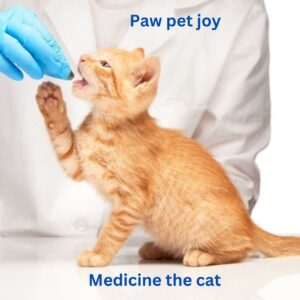Have you recently added a feline friend to your family? Congratulations! We know you will be thrilled to have your new cat in your home.

Introduction:
Keeping your feline friend happy and healthy starts with a few simple tips, some of which can be incorporated into your cat’s routine right away.
Cats are beloved pets in millions of households across the world, providing companionship, warmth, and entertainment to their owners. However, caring for a cat involves more than just providing food and a cozy place to sleep. In order to ensure your feline friend lives a happy and healthy life, there are several key aspects of cat care that every owner should be aware of.
From nutrition to grooming, vaccination to socialization, there are many factors that play a role in maintaining your cat’s well-being. Understanding the basics of cat care can help you provide the best possible care for your furry companion. In this article, we will delve into 11 important things that every cat owner should know in order to keep their feline friend happy and healthy for years to come.
Here are some helpful tips to help your cat care live their best furry life. Daily routine is important for your feline friend. These tips can help you give your pets the love and care they deserve.

We recommend buying high-quality and best-branded food for kittens or cats. Your veterinarian will be able to evaluate your new cat or kitten and determine the best diet. Factors such as age, activity level and health make a difference in what and how much a cat should eat.
Cats need taurine, an essential amino acid, for heart and eye health. The food you prescribe should be balanced for your cat or kitten’s life stage. A properly balanced diet will contain taurine.
You should always provide fresh, clean water and wash and refill your cat’s water bowls daily.
Treats should not make up more than 5-10% of the diet.
Take your cat care to your veterinarian if symptoms of anorexia, diarrhea, vomiting, or lethargy persist for more than two days.

Most cats are relatively clean and rarely need bathing, but your cat care should be brushed or combed regularly.
Frequent brushing helps keep your cat’s coat clean, reduces shedding, and reduces the incidence of hairballs.

To lift your cat, place one hand behind the front leg and the other under the hindquarters.
lift gently.
Never lift a cat by the scruff of the neck or by the front legs.

Your pet should have its own clean, dry place in your home to sleep and rest.
Line your cat’s bed with a soft, warm blanket or towel.
Make sure to wash the bed every once in a while.
Give your cat care space indoors. It can get into fights with outside cats or dogs, as well as being prone to contracting infectious diseases.

Your cat may go outside, if allowed outside, but must wear a safety collar and an ID tag.
An ID tag or an implanted microchip can help ensure your cat is returned if it gets lost.

All indoor cats need a litter box, which should be placed in a quiet, accessible location.
In a multi-level house, it is recommended to have one box per floor.
Avoid moving the box unless absolutely necessary.
Take the solid waste out of the box at least once a day.
Wash with a mild detergent and refill at least once a week.
Do not use ammonia, deodorants or fragrances, especially lemon, when cleaning the litter box.
If your cat won’t use the litter box, consult your veterinarian.

Cats need to scratch for the needs of their nails.
When a cat scratches, the smooth bottom claws are exposed.
Clip your cat’s nails every two to three weeks

Your cat should visit the vet at least once a year for exams and annual shots, and immediately if he is sick or injured.

Never give your cat medication that has not been prescribed by a veterinarian. If you suspect that your cat has ingested a toxic substance, get to the vet as soon as possible.

Female cats should be spayed and male cats should be neutered by five months of age.

Your vet will make recommendations based on your cat’s age and health. They should be given the necessary vaccinations o
Understanding common cat behaviors and body language
Cats are known for their mysterious and sometimes unpredictable behaviors. Understanding your feline friend’s body language can help you better communicate with them and provide the best care possible. Here are some common cat behaviors and what they could mean: 1. Tail movements: A cat’s tail can tell you a lot about their mood. A twitching tail may indicate that they are feeling agitated or annoyed, while a tail held upright and still is a sign of a content and happy cat. 2. Purring: Contrary to popular belief, cats do not only

purr when they are happy. They may also purr when they are scared or in pain as a way to comfort themselves. However, a cat’s purr is mostly associated with contentment and relaxation. 3. Kneading: This behavior is sometimes referred to as “making biscuits.” Cats will knead with their paws on soft surfaces, such as blankets or your lap, to show that they are feeling relaxed and comfortable. 4. Rubbing against you: Cats have scent glands on their faces and bodies, so when they rub against you, they are marking you as part of their territory. This behavior is a sign of affection and trust. 5. Slow blinking: When a cat slow blinks at you, it is a sign of trust and contentment. Return the gesture by slow blinking back at them to strengthen your bond. 6. Hissing and growling: These aggressive behaviors are a cat’s way of communicating that they are feeling threatened or scared. It’s important to give them space when they exhibit these behaviors to avoid escalating the situation. 7. Ears: A cat’s ears can tell you a lot about their mood. When their ears are forward and perked up, they are feeling curious and engaged. However, flattened ears are a sign of fear or aggression. 8. Tail puffing: If a cat’s tail suddenly puffs up like a bottle brush, it is a sign that they are feeling startled or threatened. This is a defensive posture meant to make them appear larger and more intimidating. 9. Hiding: Cats are known for their love of hiding in small spaces. This behavior is often a sign that they are feeling overwhelmed or anxious and need some quiet time to themselves. 10. Vocalizations: Cats use a variety of vocalizations to communicate with their humans, from meows and purrs to hisses and growls. Pay attention to the tone and pitch of their meows to better understand what they are trying to tell you. 11. Licking: Cats groom themselves by licking, but they may also lick their humans as a sign of affection. However, excessive licking can sometimes be a sign of stress or medical issues, so it’s important to monitor this behavior. By learning to decipher your cat’s body language and behaviors, you can better understand their needs and provide them with the best care possible. Remember that every cat is unique, so take the time to observe and bond with your feline friend to strengthen your relationship.
In conclusion, taking care of your feline friend involves more than just providing food and a cozy place to sleep. It’s important to be aware of their unique needs and behaviors in order to ensure they live a happy and healthy life. By following these 11 tips for cat care, you can build a strong bond with your pet and create a loving and nurturing environment for them to thrive in. Remember, cats may be independent creatures, but they still rely on us for their well-being and deserve the best care possible.

Leave A Comment